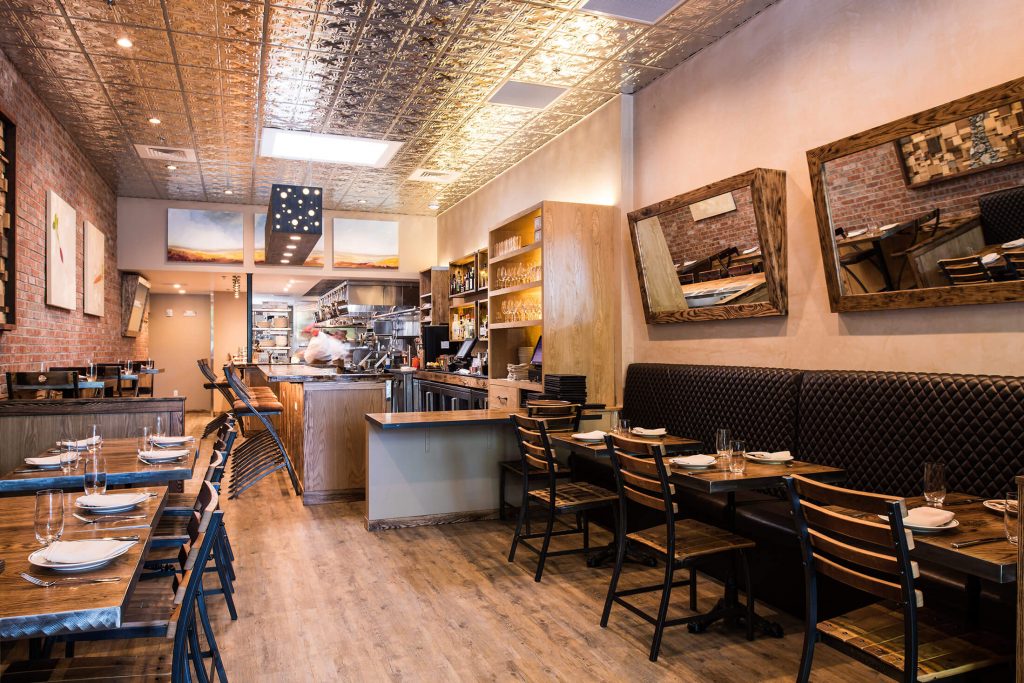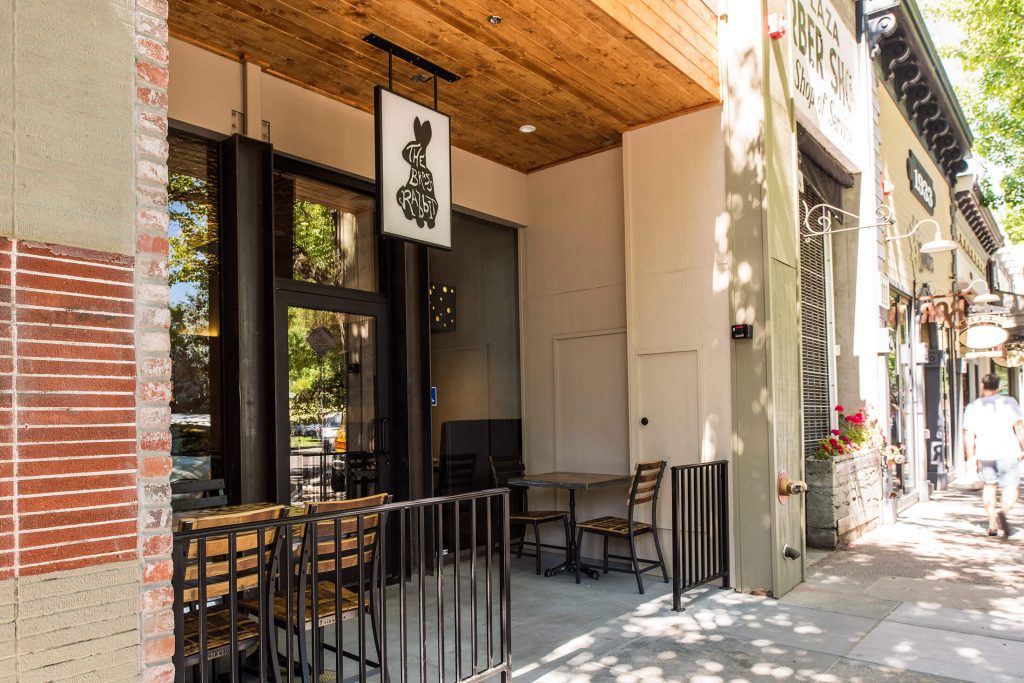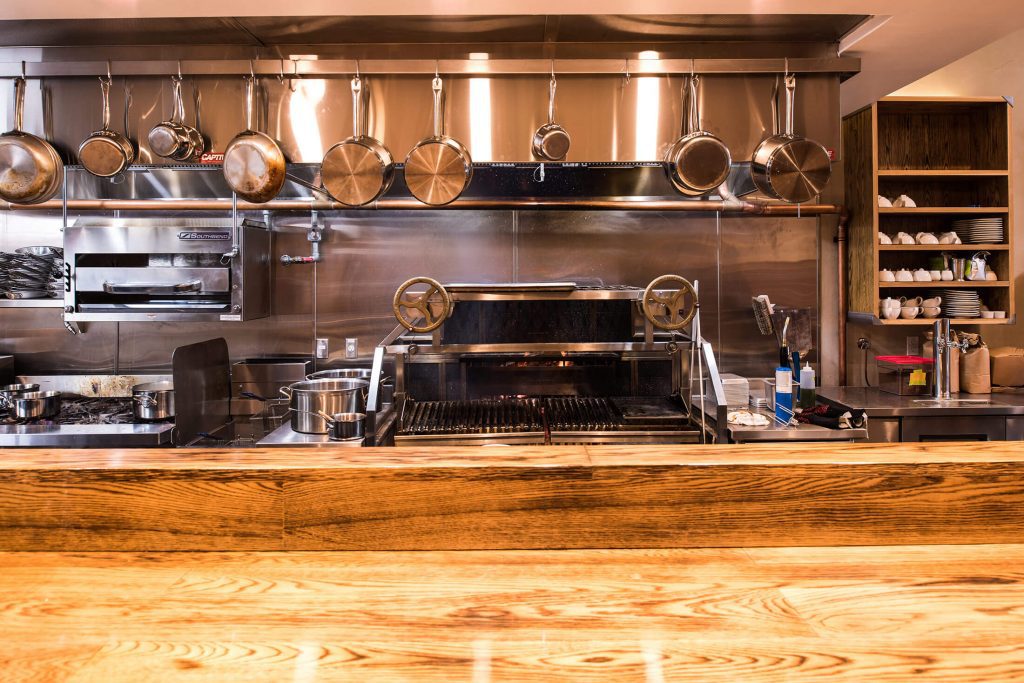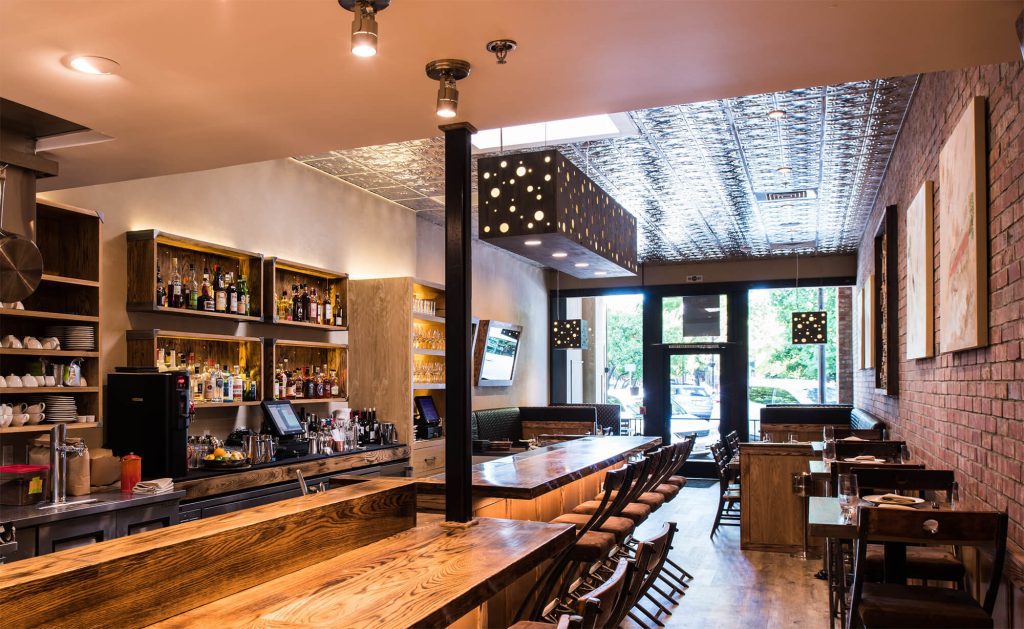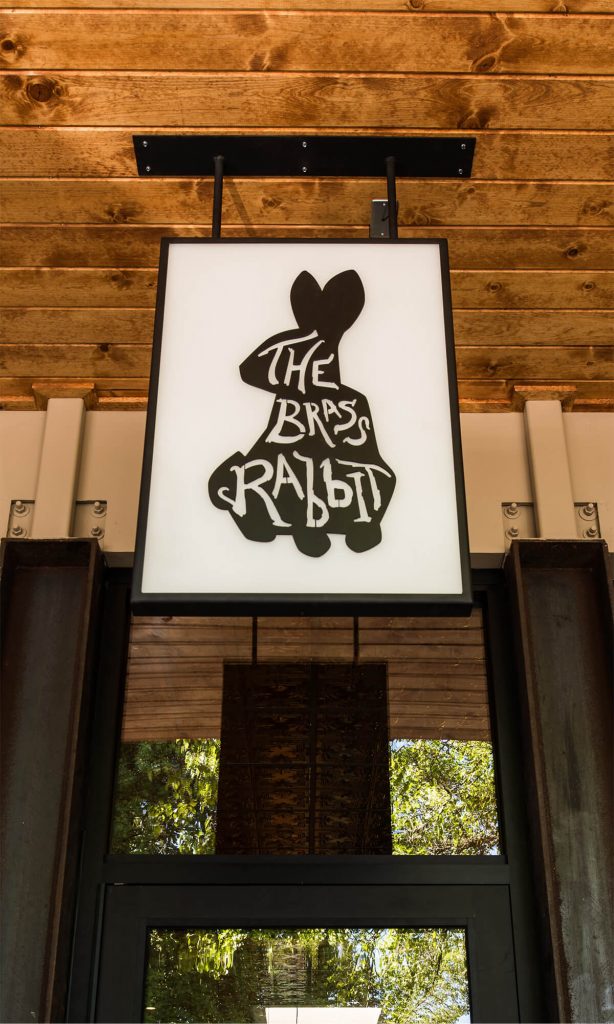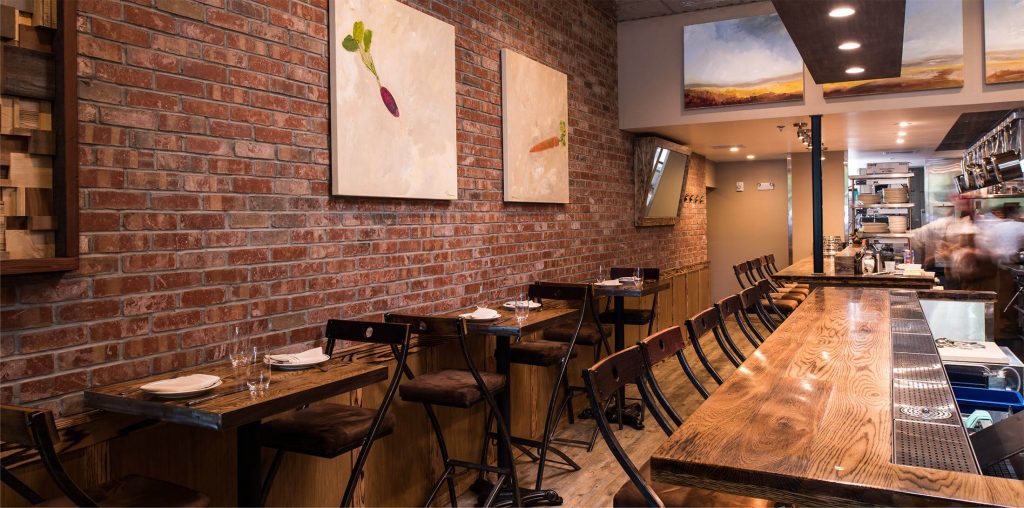Brass Rabbit Restaurant
When it comes to restaurant design and construction projects, Shane McAnelly is an expert in the field. As the executive chef of Chalkboard in Healdsburg at the time of construction, Shane had a good sense of what is required to design and build restaurant spaces. With the prospect of opening another local restaurant, Shane was very hands-on throughout all project phases of the Brass Rabbit.
Sitting at 1700 sq. ft. space, 14’ wide by 19’ long, the Brass Rabbit consists of a 40-seat dining room with bars, tables and 8 outdoor seats. The interior consists of exposed brick walls, a shiny tin ceiling, oak wood furnishings, quilted black leather booths and, most notably, a wall adorned with brass rabbit heads. The centerpiece of the restaurant is the Argentinian-style wood-fire grill and art from Bradford and Brenner and Seth Richardson is featured in the dining room.
Like most restaurant projects, the Brass Rabbit timeline needed to be carefully planned and managed. It was essential to effectively budget for the time and effort it would take to construct the restaurant. Once Shane identified the space, he drafted his ideas and as his direction became more refined, he engaged Chuck Peterson Architects and Nordby Construction to help create a clear picture of the design, schedule, permitting, and construction scope.
From initial sketches to building permit application, restaurant openings can take weeks to months depending on the complexity of the project. There are several submittals that need to be processed before technical documents are prepared for building permit application. It is important to never underestimate the consequences of the schedule. Even the most experienced team can fall victim to what cannot be seen…and so begins the tale of Brass Rabbit.
General Contractors always strive to be on time and on budget. Unfortunately, builders can be subjected to unforeseen conditions that ultimately impact the project. The Brass Rabbit was no exception to this rule. Tony Simmons, President at Nordby Construction explains, “the Brass Rabbit started as a tenant improvement and ended up requiring a complete gut of the interior space – we had to replace everything.” The Brass Rabbit’s interior space, located within a building originally built in the late 1800s, had many unforeseen conditions or as Shane McAnelly aptly describes, “the building was a Pandora’s box.”
Permitting for restaurants can be complicated. Restaurant projects require a building permit, health approvals, liquor licensing, patio dining approvals, and more. In this case, what was supposed to be a simple tenant improvement turned into a much more complicated project, taking 4 months from the time of application to when a building permit was issued. Due to the building’s age, the City required a new grease interceptor, new sewer lines, new water service and lines, new electrical service and distribution, new fire sprinklers, new roof framing, new roofing, new concrete slabs, new gas service and lines, and sidewalk replacement to meet ADA compliance. As a result of the City’s review, the required project upgrades added 2 months to the overall building construction schedule. The dramatic increase in scope pushed out the opening date and required the construction crew to work through the winter season.
The Brass Rabbit exemplifies Nordby Construction’s ability to make the most out of small spaces, and adapt to structures’ needs (in this case an 1800s remodel). The space is intimate, effectively setting the mood for the style of food and a personal touch is added with the exposed kitchen. When asked about his favorite aspects of the space, Chef Shane said, “I really like the grill and the space. A small restaurant encourages me to get out and talk to the guests as I can see everyone from the kitchen.”
All new restaurants require time to effectively plan, design and build. As in the case of Brass Rabbit, it is essential to factor in time and money for unforeseen conditions. It is even more critical to engage with a reputable architect and builder early to set expectations and realistic deliverables. Pre-construction planning is essential in this process and Nordby Construction’s leadership ability in this position was key to making this project a success.
